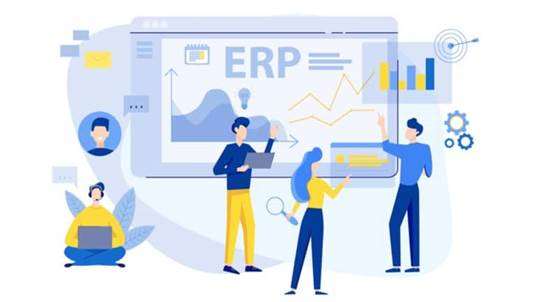Combined with Lighthouse Jenkins X makes it easy to inherit versioned shared pipeline steps via Git and a simple syntax providing flexibility and easy maintenance. It is a web dashboard which is nothing but powered from a war file. With the help of Dashboard, we can configure the jobs/projects but the build takes place in Nodes/Slave. By default one node (slave) is configured and running in Jenkins server.

Prior to deploying the code to production, it is crucial to test it for problems. This is especially important when a new build of a particular software product is produced. If the build is error-free, it is ready to go to production.
Git bisect: How to identify a bug in your code?
Automation, including CI/CD and test automation, is one of the key practices that allow DevOps teams to deliver “faster, better, cheaper” technology solutions. In the Branches to Build section, change the branch name master to the actual branch name in the project. Continue to the following steps to add the required dependencies from the local machine. When the installation completes, Jenkins automatically restarts.
Also, a pipeline block is a
key part of Declarative Pipeline syntax. Under the Authorization section, select Matrix-based security. For different metrics and graphical displays, other plugins are available. Jenkins automatically restarts when the installation completes. Below is an example for creating a straightforward GitHub build job in Jenkins. The setup assumes Tomcat was previously installed and configured.
What is Jenkins Slave?
This CI server runs in servlet containers such as Apache Tomcat. Jenkins facilitates continuous integration and continuous delivery in software projects by automating parts related to build, test, and deployment. This makes it easy for developers to continuously work on the betterment of the product by integrating changes to the project. Jenkins builds and tests our software projects which continuously making it easier restaurant app builder for developers to integrate changes to the project, and making it easier for users to obtain a fresh build. Jenkins builds and tests our software projects, which continuously making it easier for developers to integrate changes to the project, and making it easier for users to obtain a fresh build. You can even get skilled in server automation, continuous integration, continuous deployment, build pipelines, and more.
- Jenkins is the most famous Continuous Integration tool, I know you are curious to know the reason behind the popularity of Jenkins, and if Jenkins is easy to learn.
- Although Jenkins requires scripting some automation steps, the program provides a fast and robust way to systematize the software development lifecycle.
- It’s easy to distribute Jenkins across work machines, which makes building, testing, and deployment faster.
- You can’t get to continuous delivery or deployment without first solving continuous integration.
- You can install/upgrade all available plugins from the Jenkins dashboard.
- Further configuration and detailed setups depend on the project structure and the end goal.
Jenkins is a platform-agnostic application for continuous integration and delivery, known as CI/CD. The software helps developers automate tasks and software testing during the software development lifecycle. As a result, end-users receive the newest software upgrades faster and with fewer bugs.
Cypress Testing
Jenkins does not allow for federation across servers resulting in performance issues. Lack of federation can also lead to a proliferation of independent Jenkins servers that are difficult to manage across a large enterprise. Jenkins has been around much longer than other solutions in this space. This, plus its flexibility, has led to it being widely deployed.

Jenkins is an open-source server that is written entirely in Java. It lets you execute a series of actions to achieve the continuous integration process, that too in an automated fashion. By default Jenkins X ships with Tekton for a clean declarative cloud native way to describe pipelines.
What Is Jenkins X?
The servers and the users are the focus of Jenkins security. The server, whether a virtual machine (VM) or bare metal server, is set up to interact with the minimum number of processes possible. This is possible with a typical server OS and network security mechanism.

Initially, a developer integrates a new piece of code into the existing source code and commits. Now, the Jenkins server performs a regular repository check and finds and pulls the changes as soon as the developer commits the new code. Continuous development refers to the process of automating the development and packaging of source code and deploying it to testing and production environments. Continuous deployment is the process of automating the deployment of the source code to its desired destination. Along with continuous integration, Jenkins also supports continuous delivery and continuous deployment.
Features of Jenkins
It is possible to escalate the software development process with Jenkins automation. Throughout the life cycle, it helps you manage software delivery processes. Various life cycle stages include building, testing, documenting, packaging, staging, deployment, and more. With Jenkins, organizations can accelerate the software development process by automating it.

Jenkins lets you run a build on multiple machines simultaneously to minimize the total time it takes to run these processes. Jenkins can deploy the build to an environment where user acceptance testing (UAT) can be done before it goes into production. Jenkins is a Java-based DevOps automation tool for continuous integration/continuous delivery and deployment (CI/CD).
Jenkins Core Concepts
The Jenkins master can also execute the jobs directly but it is always recommended to select the appropriate agent(s) for build and execution-related tasks. The backbone of Jenkins is the community and the community members have been instrumental in the development (and testing) of close to 1500+ plugins available in the Update Center. Octant runs outside of the cluster and uses the authentication and permissions users have to interact with Kubernetes resources. Jenkins X can also work well with Jenkins for users that have traditional workloads.
CloudBees and the Jenkins Community
For example, job creation and other administrative tasks should only be available to the system administrator. The Git plugin installs when choosing the Install suggested plugins option during the installation process. Jenkins is not technically a testing tool; however, it’s used to automate testing. Jenkins t can automate testing tasks, such as running tests and generating test reports, but these tests are incorporated manually. Moreover, in collaboration with Docker, Jenkins escalates the progress of the development team working on different projects.
Jenkins is used to build and test your product continuously, so developers can continuously integrate changes into the build. Jenkins is the most popular open source CI/CD tool on the market today and is used in support of DevOps, alongside other cloud native tools. Jenkins automates the software development process with continuous integration abilities. Jenkins offers security tools to help organizations keep their data and systems safe, right out-of-the-box. This includes features like role-based access control, session management, and encryption.

